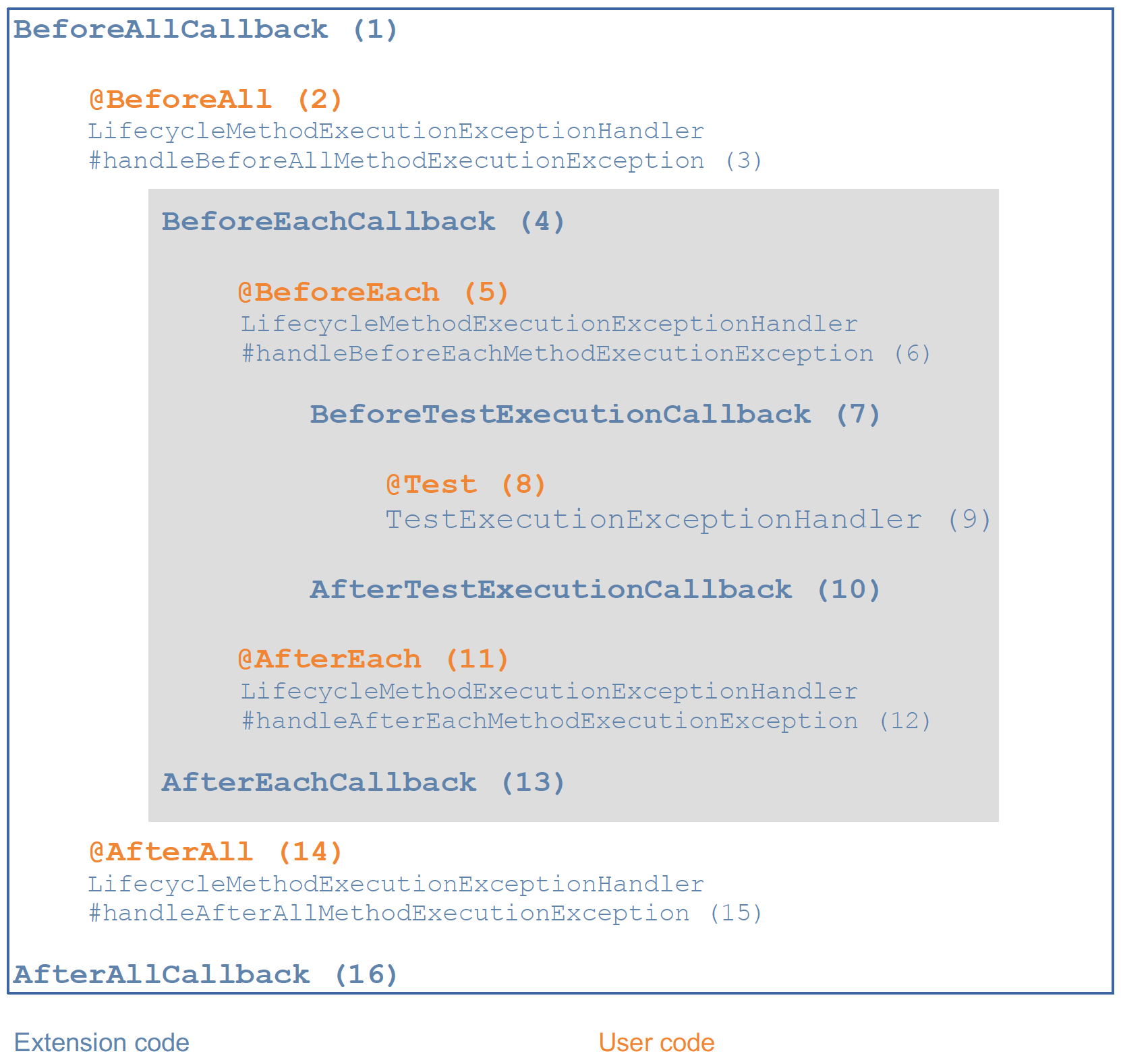
在 JUnit5 中,测试生命周期由 4 个主要注解驱动,即@BeforeAll、@BeforeEach、@AfterEach和@AfterAll。与此同时,每个测试方法都必须标注@Test注解。

在 junit 测试生命周期中,我们需要一些方法来设置和清除测试运行的环境或测试数据。
在 JUnit 中,对于每个测试 - 创建了一个新的测试实例。@BeforeAll和 @AfterAll注释 - 以其名称清除 - 在整个测试执行周期中只应调用一次。所以他们必须被宣布
在 JUnit 中,对于每个测试 ,都会创建了一个新的测试实例。@BeforeAll和@AfterAll注解,在整个测试执行周期中只应调用一次。所以他们必须被声明为static。
如果他们是用相同注释注释的多个方法(例如两个方法@BeforeAll),那么它们的执行顺序是不确定的。
@BeforeEach和@AfterEach为每个测试实例调用,所以他们不需要static。
public class AppTest {
@BeforeAll
static void setup(){
System.out.println("@BeforeAll executed");
}
@BeforeEach
void setupThis(){
System.out.println("@BeforeEach executed");
}
@Test
void testCalcOne()
{
System.out.println("======TEST ONE EXECUTED=======");
Assertions.assertEquals( 4 , Calculator.add(2, 2));
}
@Test
void testCalcTwo()
{
System.out.println("======TEST TWO EXECUTED=======");
Assertions.assertEquals( 6 , Calculator.add(2, 4));
}
@AfterEach
void tearThis(){
System.out.println("@AfterEach executed");
}
@AfterAll
static void tear(){
System.out.println("@AfterAll executed");
}
}
控制台输出
@BeforeAll executed
@BeforeEach executed
======TEST ONE EXECUTED=======
@AfterEach executed
@BeforeEach executed
======TEST TWO EXECUTED=======
@AfterEach executed
@AfterAll executed
要在 JUnit 5 中禁用测试,您将需要使用@Disabled注释。它相当于 JUnit 4 的@Ignored注释。
@Disabled 注释可以应用于测试类(禁用该类中的所有测试方法)或单独的测试方法。
@Disabled
@Test
void testCalcTwo()
{
System.out.println("======TEST TWO EXECUTED=======");
Assertions.assertEquals( 6 , Calculator.add(2, 4));
}
在任何测试方法中,ou 将需要确定它是否通过失败。你可以使用断言来做。资产有助于通过测试用例的实际输出验证预期输出。为了保持简单,所有 JUnit Jupiter 断言是 org.junit.jupiter.Assertions 类中的静态方法。
void testCase()
{
//Test will pass
Assertions.assertEquals(4, Calculator.add(2, 2));
//Test will fail
Assertions.assertEquals(3, Calculator.add(2, 2), "Calculator.add(2, 2) test failed");
//Test will fail
Supplier<String> messageSupplier = ()-> "Calculator.add(2, 2) test failed";
Assertions.assertEquals(3, Calculator.add(2, 2), messageSupplier);
}